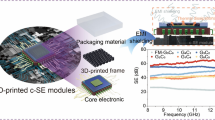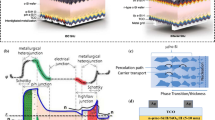Abstract
The electrical reliability of multilayer high density interconnection printed circuit boards (HDI-PCBs) is mainly affected by the thermo-mechanical stability of stacked micro via interconnections. Here, a critical failure mode is the stress related crack between the electrolytically filled via and the target pad, commonly known as target pad separation. The junction includes two Cu-Cu-interfaces, one between the target Cu pad and the thin electroless Cu layer and the second between electroless Cu and electrolytic Cu. In this paper we will show that state-of-the-art electroless Cu plating processes are able to provide solid, completely recrystallized and highly reliable stacked via junctions. Defect free interfaces were achieved by using ionic Pd-activators and electroless Cu baths with a cyanide based stabilizer system. Cyanide free electroless Cu baths tend more to the formation of nanometer sized defects, discovered via Transmission Electron Microscopy (TEM). In this case a precise adjustment of single stabilizer components is mandatory to achieve defect free layers. The defects are hollow and were identified as “nano voids”. A critical density of these nano voids weakens the interface, predefines the crack path and reduces the overall reliability of the junction. A precise localization of the nano voids within the junction was enabled by detecting the Ni-containing electroless Cu layer via TEM-Ni mapping. Slower volume exchange of the electroless Cu solution within the blind micro via (BMV) substantially increases the nano void density. The ability of nano voids to migrate and coalesce at elevated temperatures was investigated as well.
Similar content being viewed by others
References
H. Heer, R. Wong,” Reliability of stacked microvia”, IPC APEX EXP Conference Proceedings (2015)
R. Schmidt, T. Beck, R. Rooney, A. Gewirth, “Optimization of electrodeposited copper for sub 5 µm L/S redistribution layer lines by plating additives”, IEEE 68th ECTC (2018), https://doi.org/101109/ECTC.2018.00188
S. Nakahara, Y. Okinaka, “The Hydrogen Effect in Copper”, Mat. Sci. Eng. A 101, 227–230 (1988), https://doi.org/10.1016/0921-5093(88)90069-X
J.E. Graebner, Y Okinaka, “Molecular hydrogen in electroless copper deposits”, J. Appl. Phys. 60, 36–39 (1986), https://doi.org/10.1063/1.337656
A. Vaskelis, R. Juskenas, J. Jaciauskiene, “Copper hydride formation in the electroless copper plating process: in situ X-ray diffraction evidence and electrochemical study”, Electrochemica Acta, Vol. 43, 9, 1061–1066 (1998), https://doi.org/10.1016/S0013-4686(97)00282-X
T. Sharma et al., “Nickel dependence of hydrogen generation, hydrogen co-deposition and film stress in an electroless copper process”, Thin solid films, Vol. 666, 9, 76–84 (2018), https://doi.org/101016/j.tsf.2018.09.029
T. Bernhard et al., “Main impact factors on internal stress of electroless deposited copper films”, IMAPS Fall conference, Vol. 2015, 99–104 (2015), https://doi.org/10.4071/isom-2015-TP42
S. Nakahra et al., “Microscopic mechanism of the hydrogen effect on the ductility of electroless copper”, Acta Metallurgica, Vol. 36, 7, 1669–1681, (1988), https://doi.org/10.1016/0001-6160(88)90234-9
K. Zeng, J.M. Williamson, “Improve interconnect reliability of BGA substrate with stacked vias by reducing carbon inclusion in the interface between via and land pad”, IEEE 68th ECTC (2018), https://doi.org/10.1109/ECTC.2018.00031
K. Lakoubovskii, K. Mitsuishi, Y. Nakayama, K. Furuya, “Thickness measurements with electron energy loss spectroscopy”, Microscopy Research and Technique, vol. 71, 8, 626–631, (2008), https://doi.org/10.1002/jemt.20597
L. Clement et al., “Strain measurements by convergent-beam electron diffraction: The importance of stress relaxation in lamella preparations”, Appl. Phys. Lett. 85, 651 (2004), https://doi.org/10.1063/1.1774275
IPC-standard: IPC-TM-650 2.6.27A
T. Bernhard, L. Gregoriades, “Nanovoid Formation at Cu/Cu/Cu Interconnections of Blind Microvias: A Field Study”, will be published at IMAPS Conference Proceedings (2019)
Author information
Authors and Affiliations
Rights and permissions
About this article
Cite this article
Bernhard, T., Branagan, S., Schulz, R. et al. The Formation of Nano-voids in electroless Cu Layers. MRS Advances 4, 2231–2240 (2019). https://doi.org/10.1557/adv.2019.336
Published:
Issue Date:
DOI: https://doi.org/10.1557/adv.2019.336




